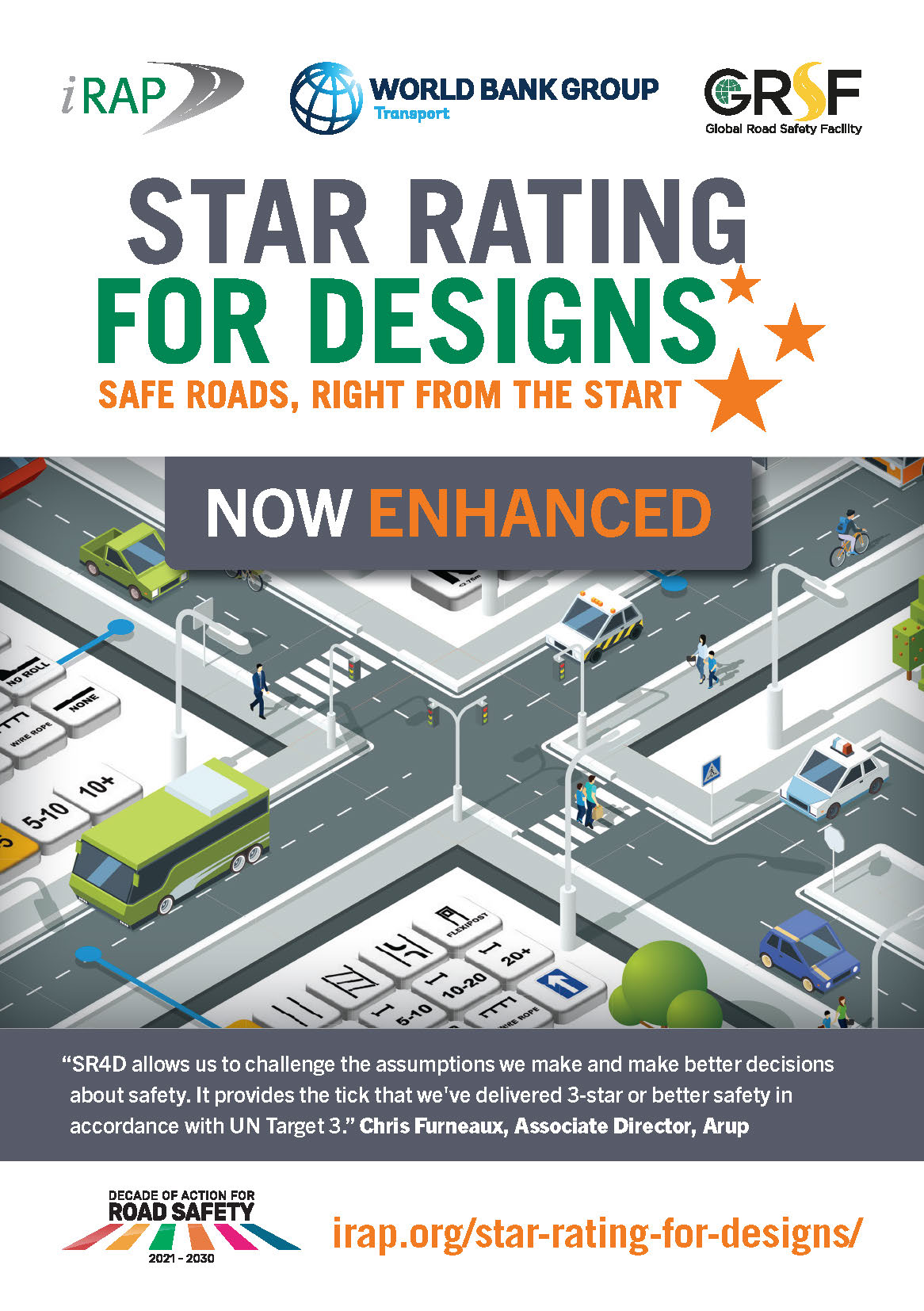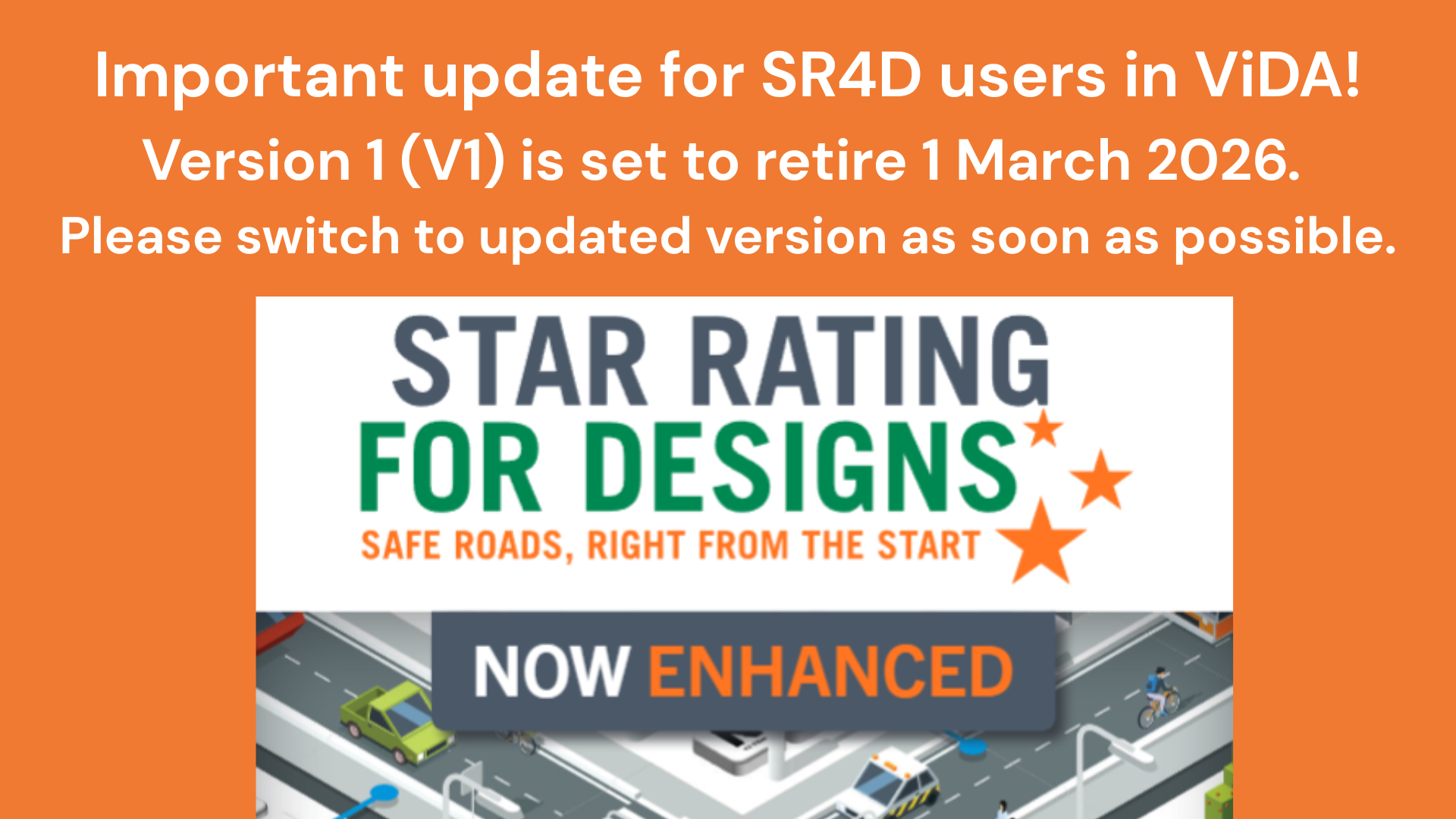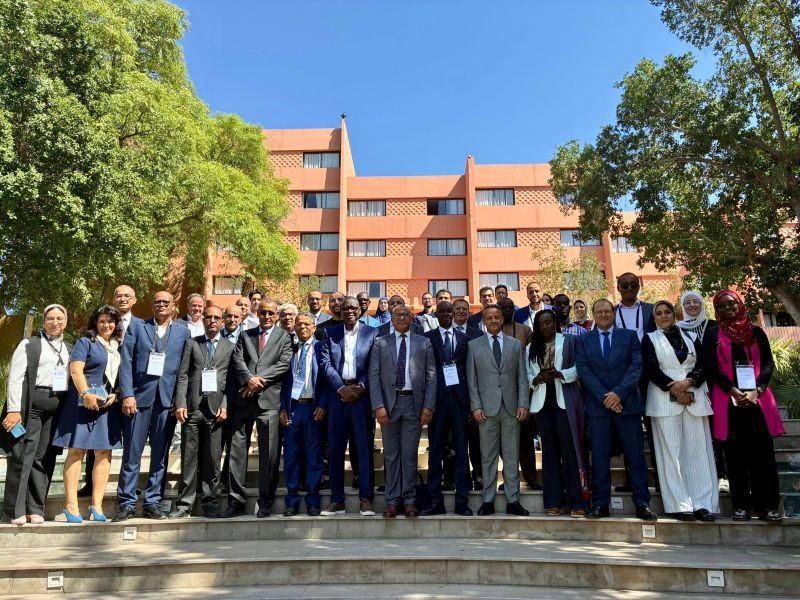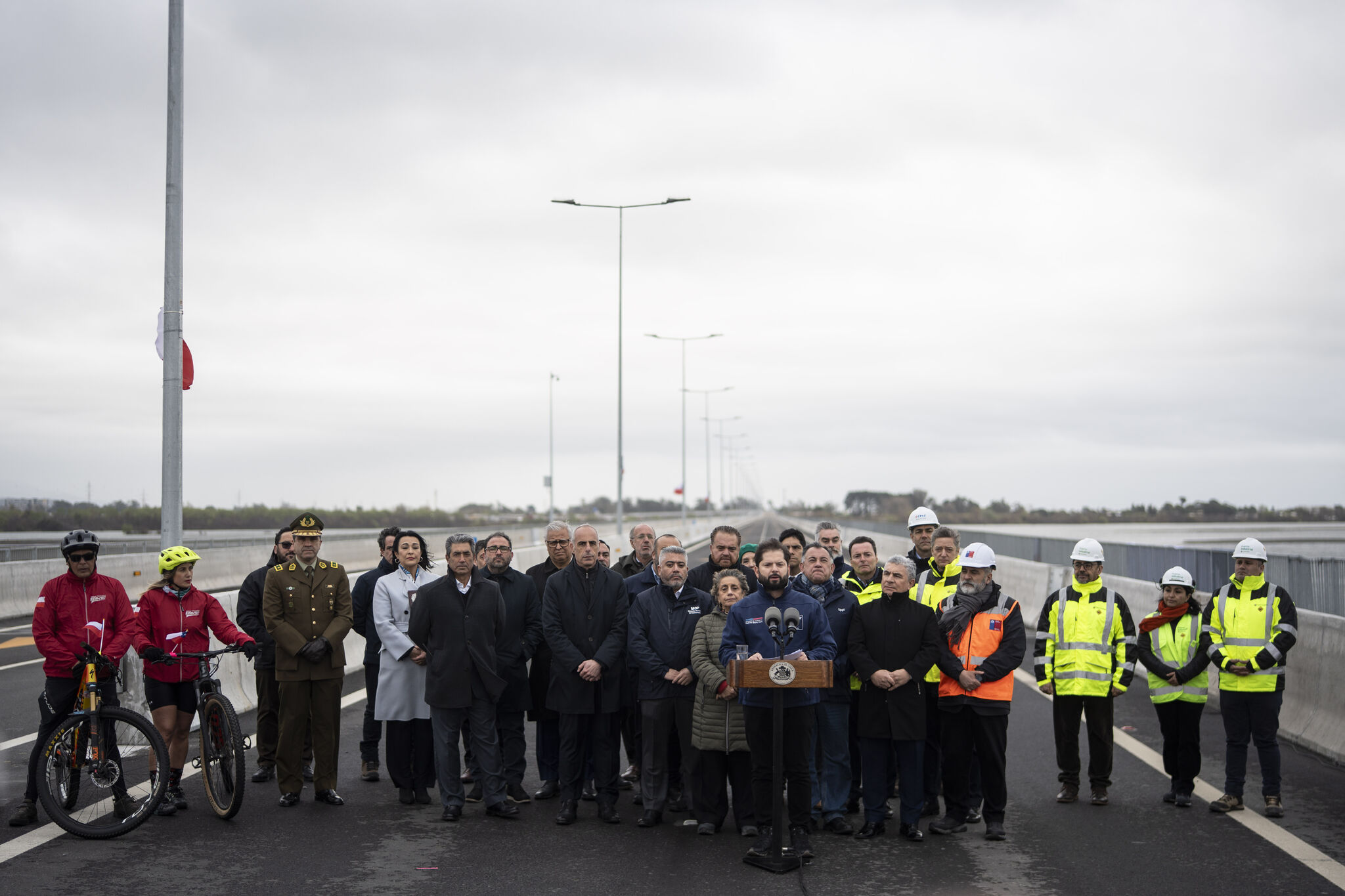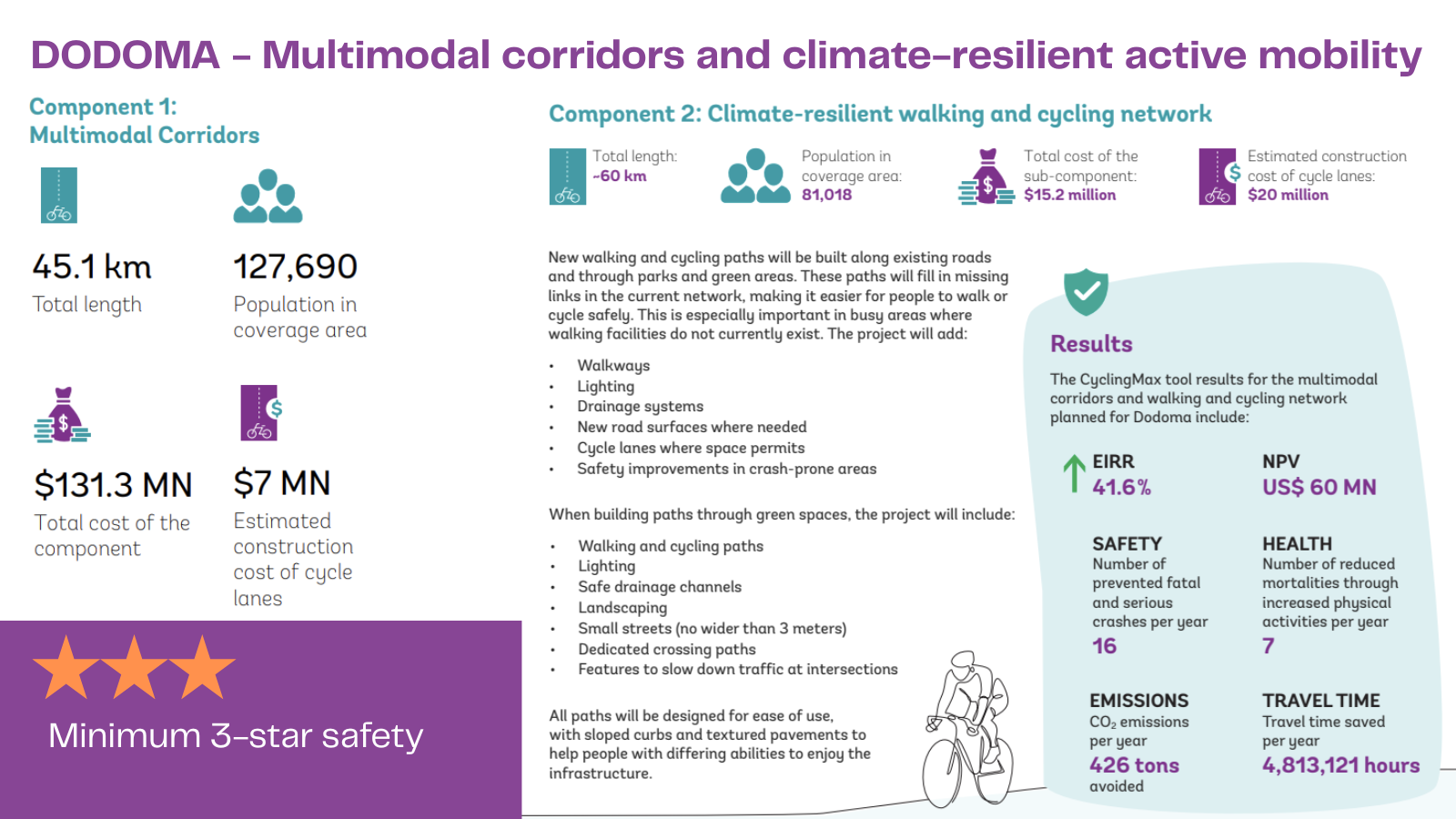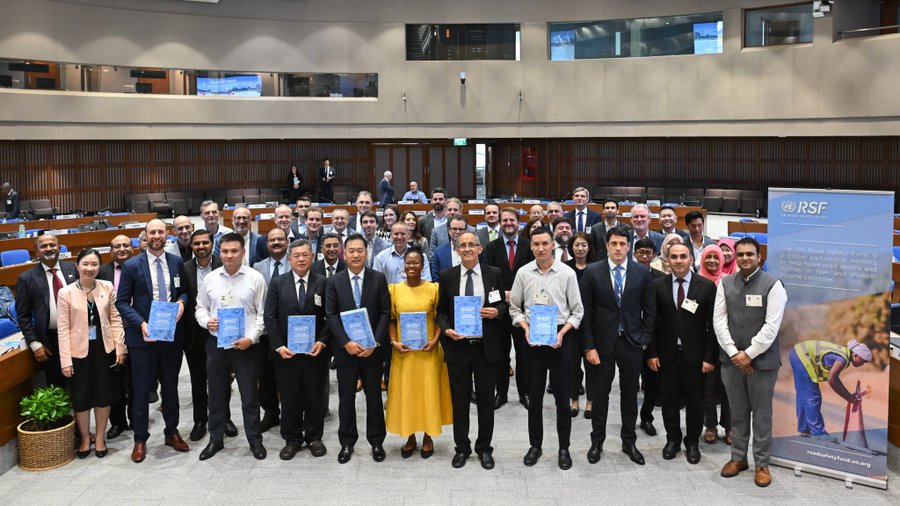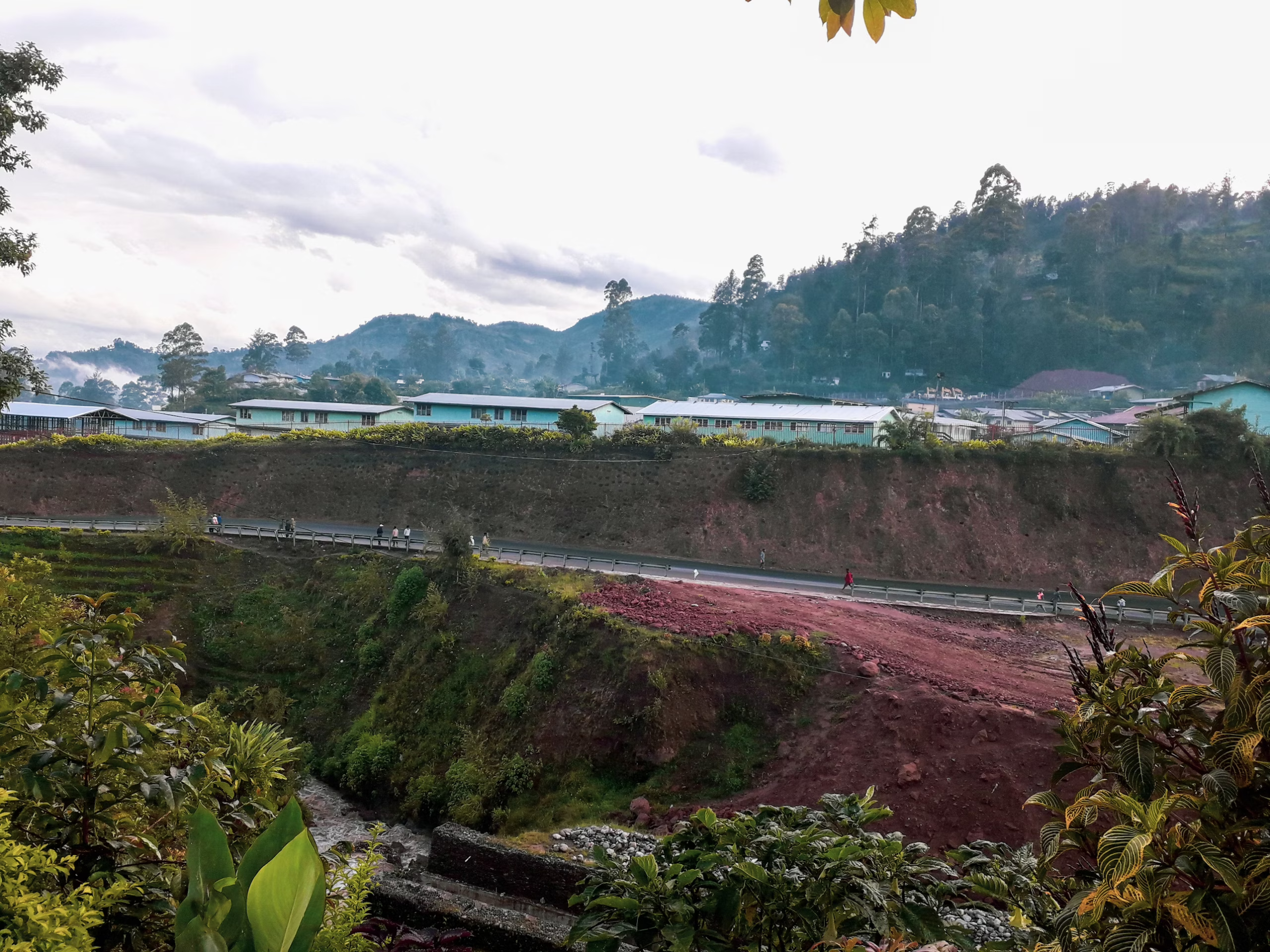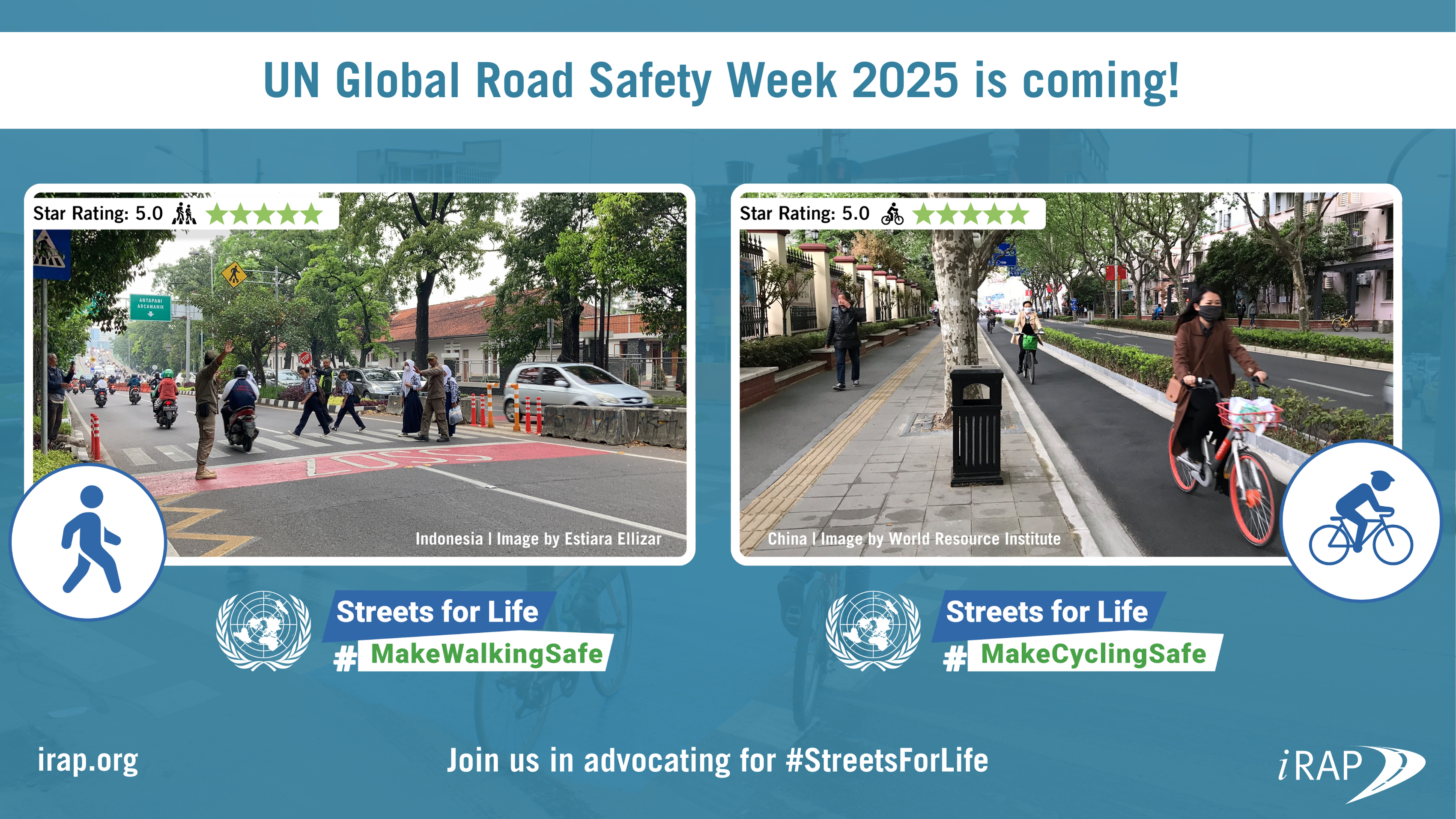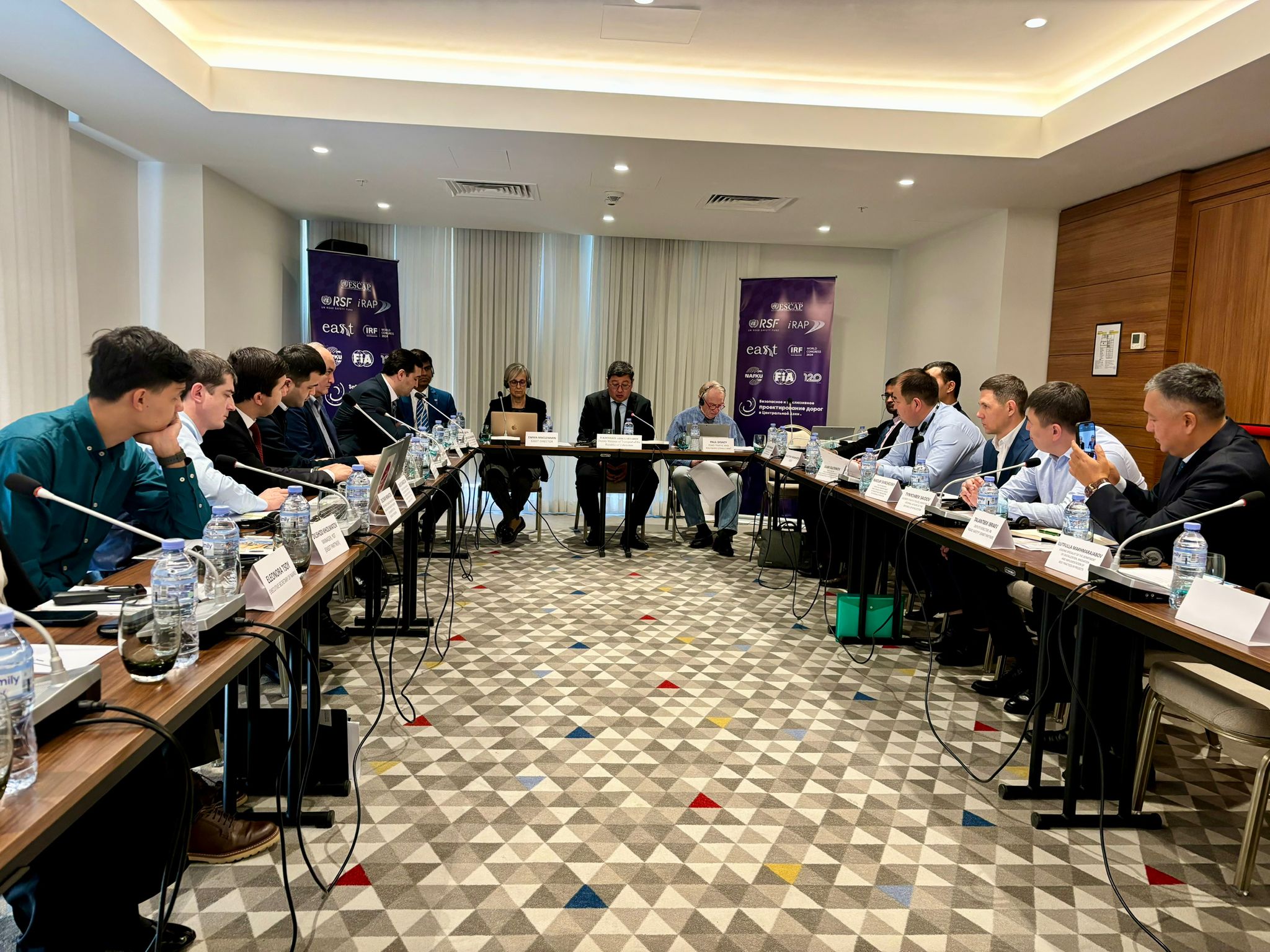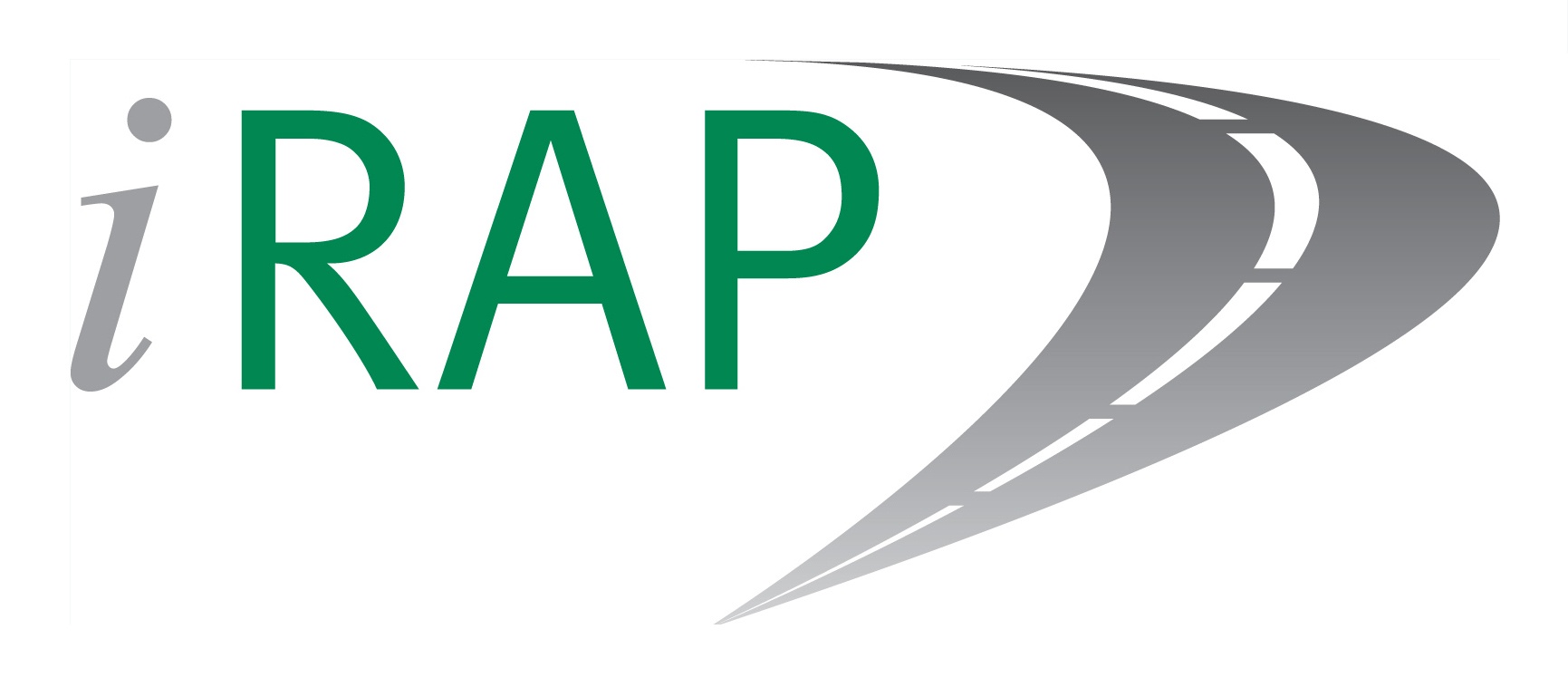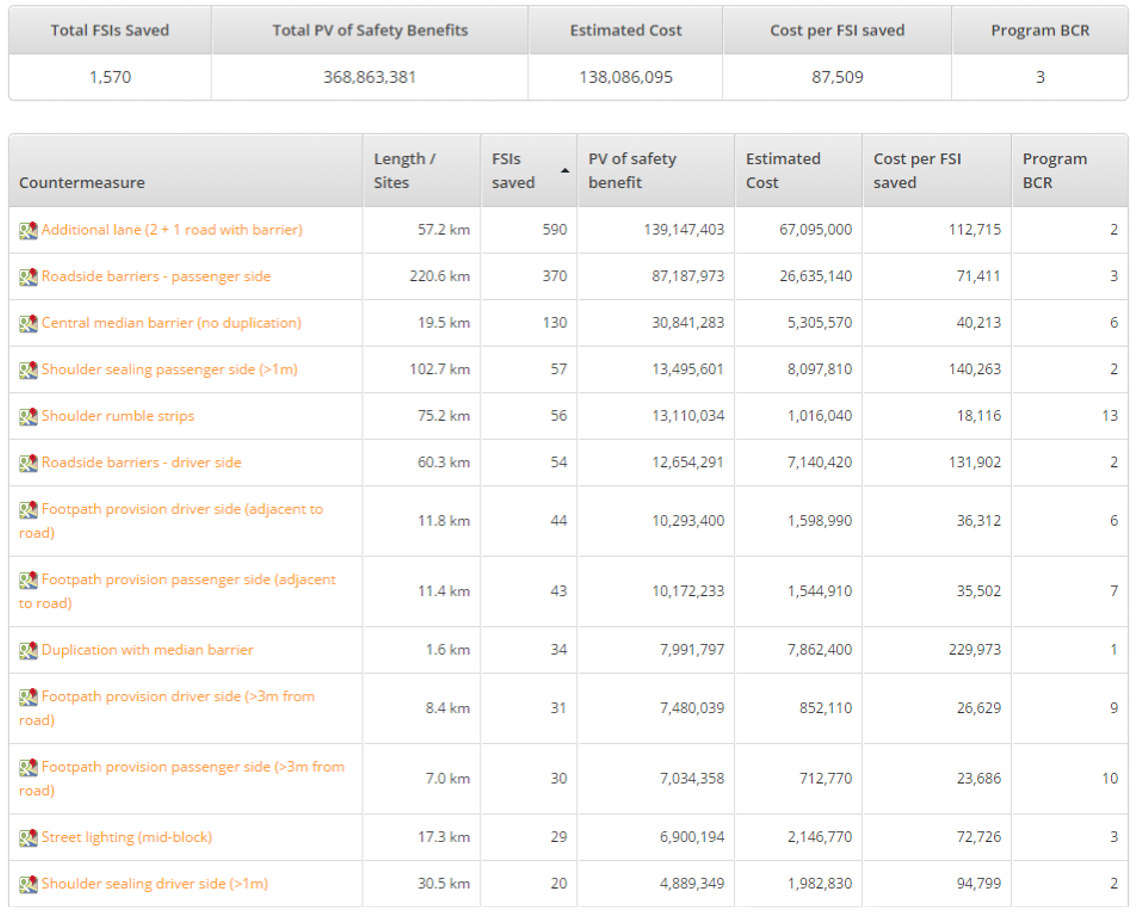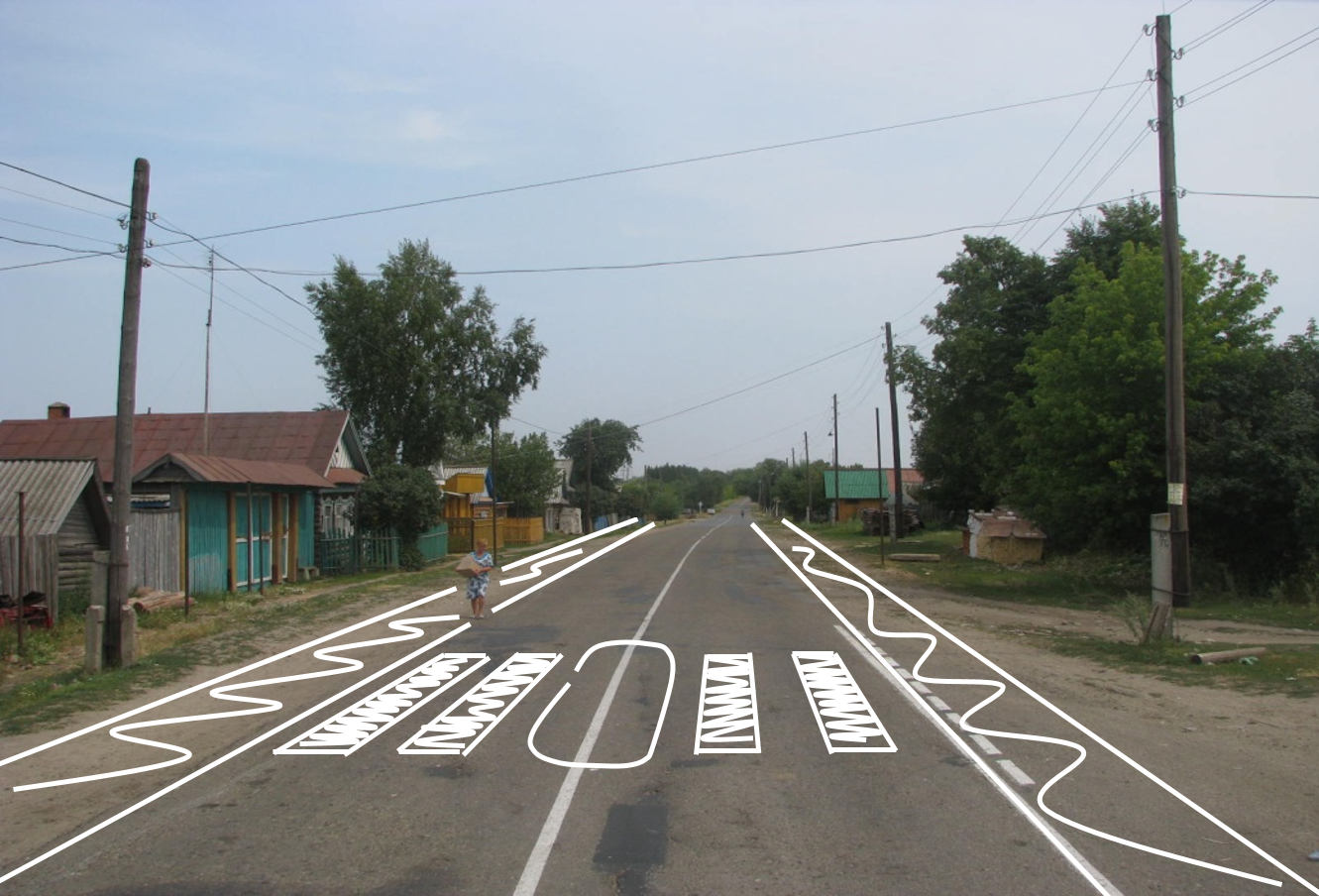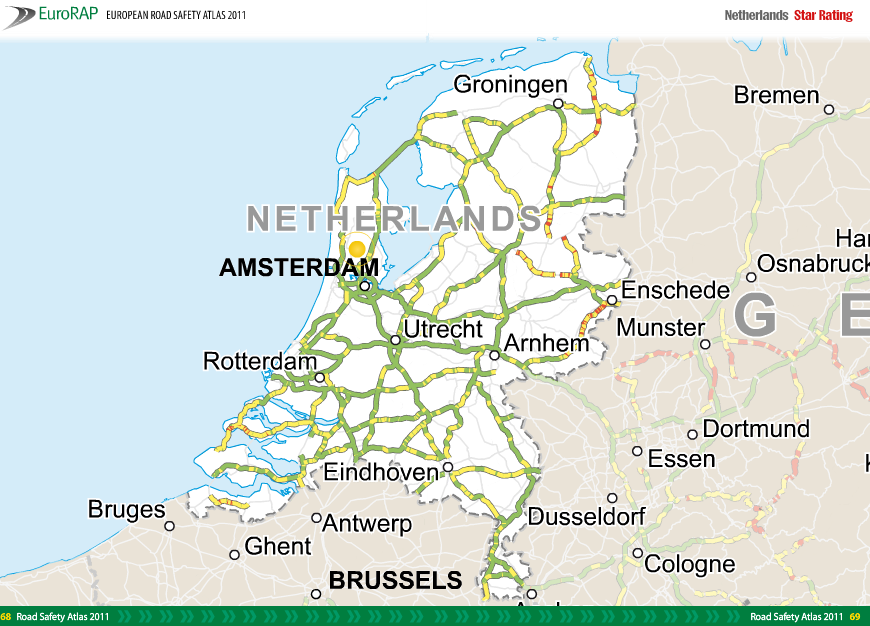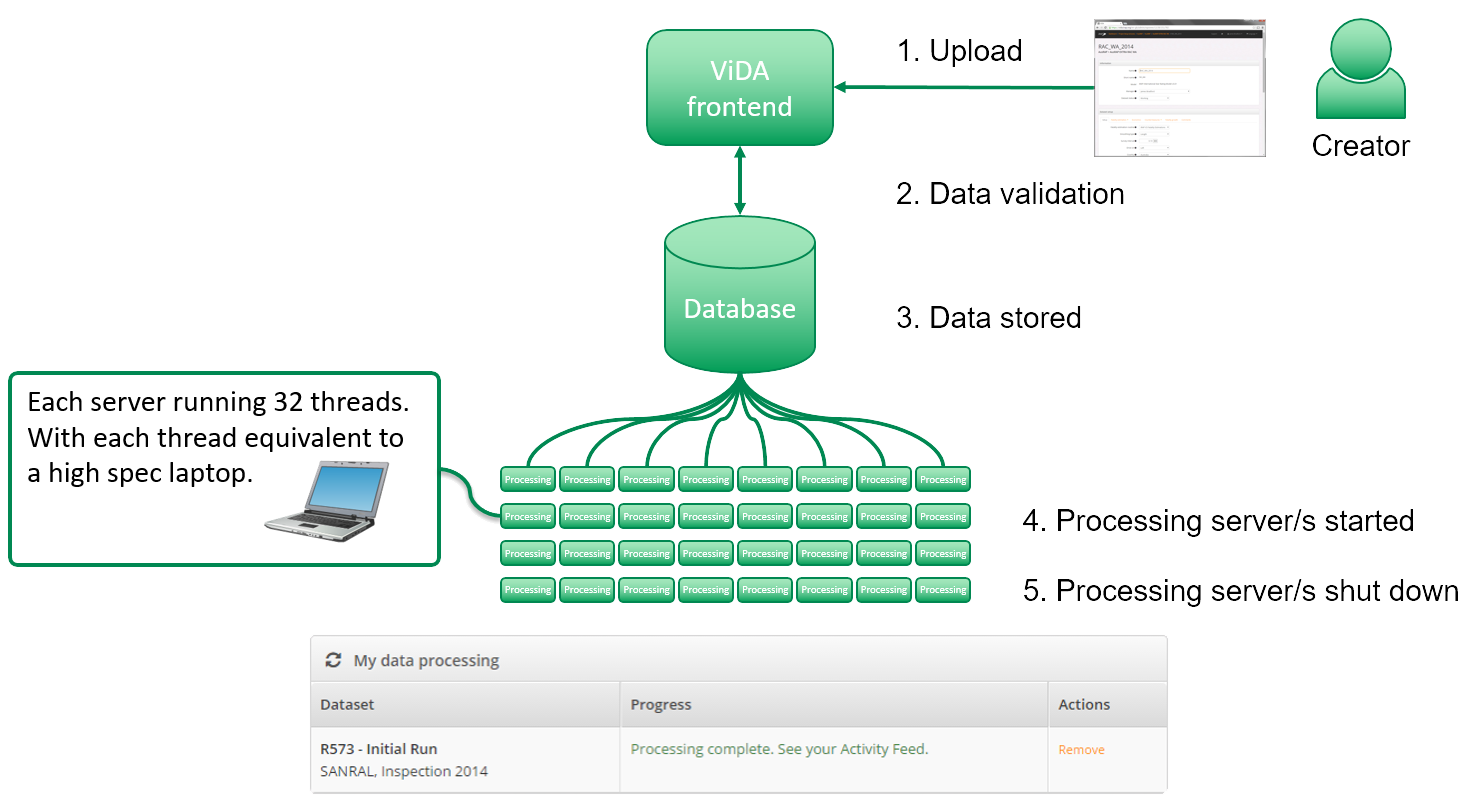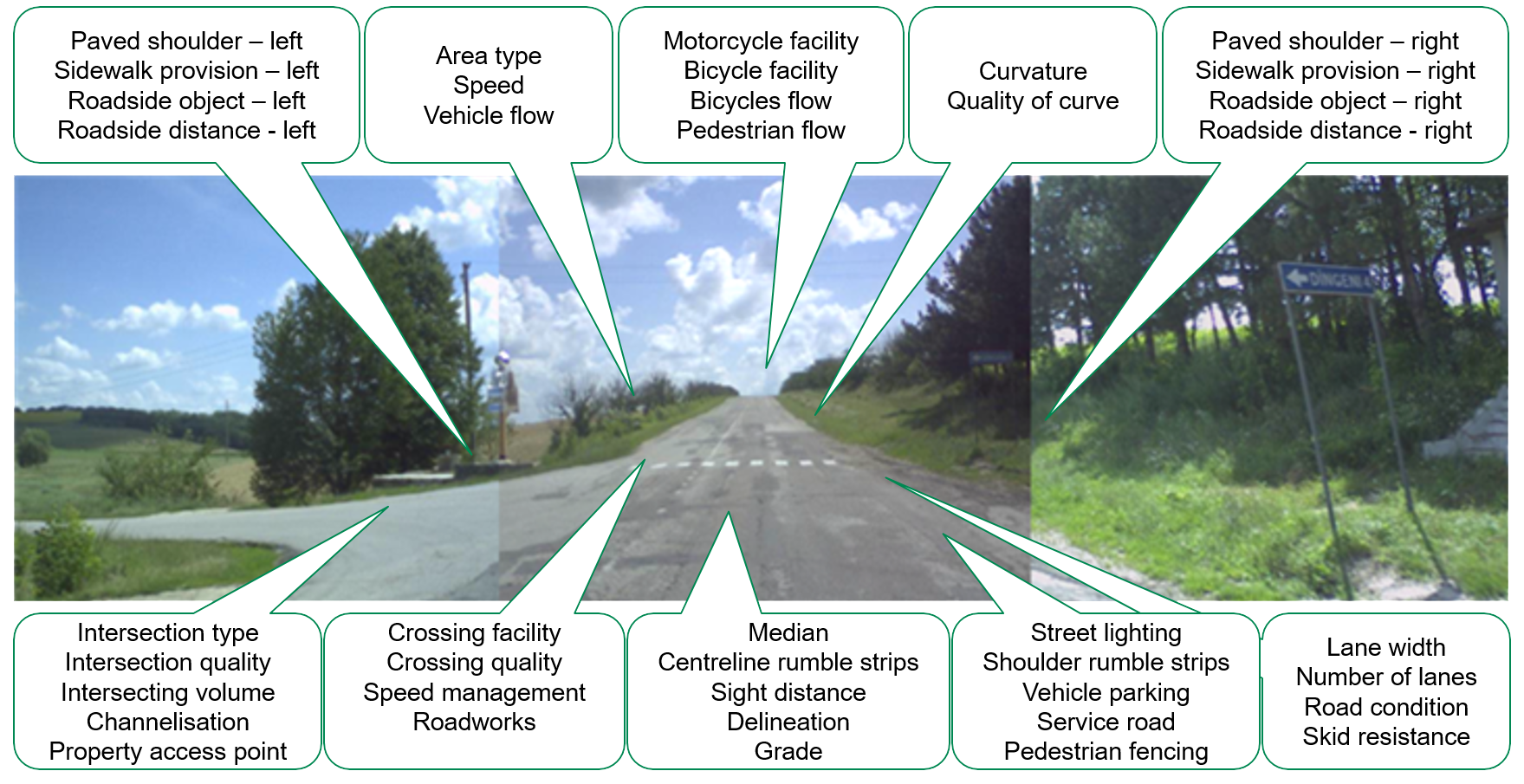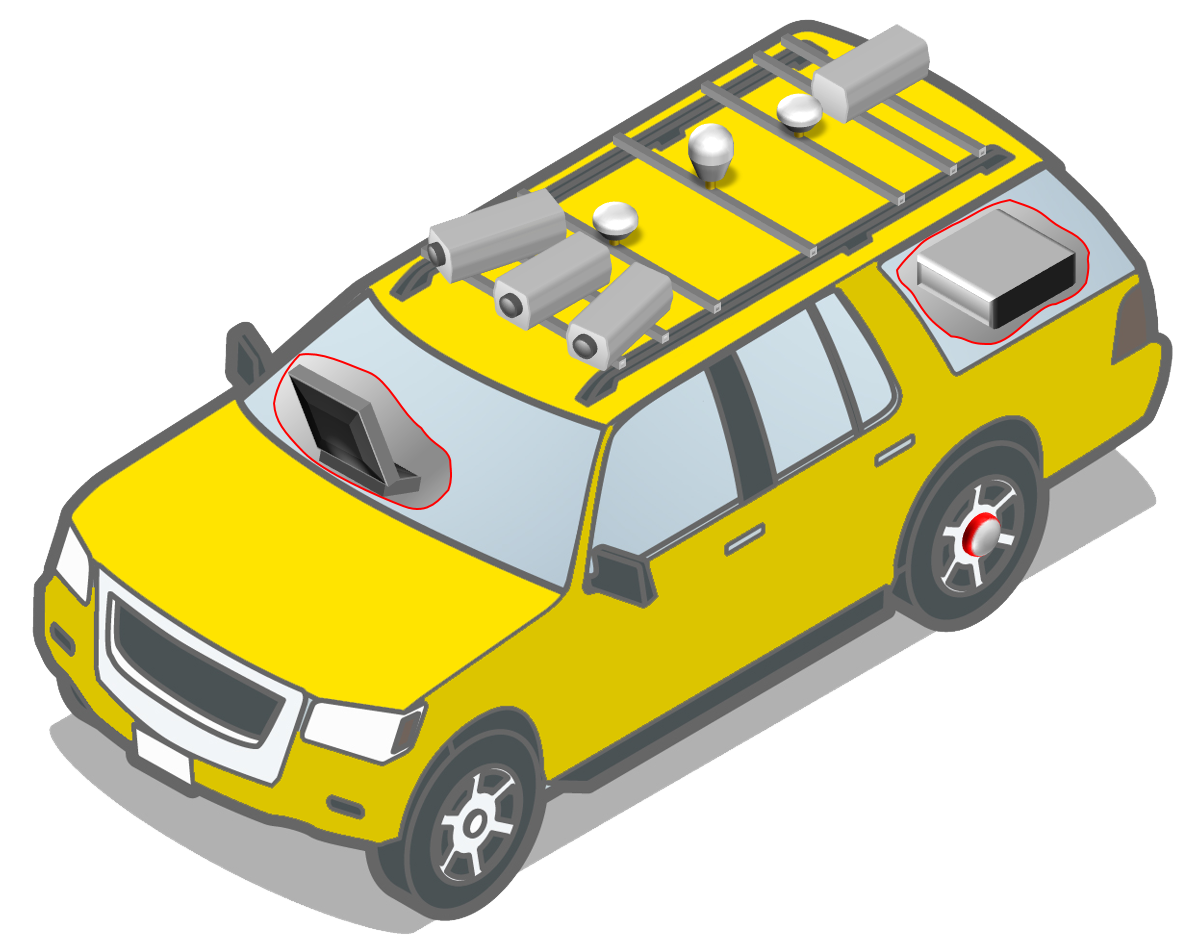
Star Rating for Designs (SR4D) is a process and evidence-based programme of applications informed by the iRAP Methodology which enable the objective measure, and improvement, of the level of road safety ‘built in’ to a road design for vehicle occupants, motorcyclists, pedestrians and cyclists, before the commencement of civil works.
SR4D enables road engineers and designers, municipalities and road authorities, funding agencies and governments to make roads safer.
Ensuring the safety of a road design before it clears the design phase directly equates to lives and serious injuries saved on the street. Despite knowledge and free tools to improve design safety, unsafe 1- and 2-star roads are still being built.
SR4D strengthens the road safety audit process, complementing it with an objective and repeatable qualification of road user risk (without the need for a high level of experience), and supports the wider potential of Star Ratings as a safety performance metric and maximised safety in road infrastructure investment.
SR4D will be essential to supporting countries to achieve the United Nations Global Road Safety Performance Targets, especially Target 3 to ensure all new roads are built to a 3-star or better standard for all road users.
New Enhancements announced
Innovative enhancements to iRAP’s Star Rating for Designs (SR4D) web app, allowing the safety of road designs to measured before the commencement of civil works, have been unveiled at the IRF World Congress in Istanbul (October 2024).
The safety of nearly 58,000 kilometres of road designs in 63 countries have already been assessed and improved with the use of SR4D, and the latest enhancements make usability even better for road designers worldwide.
The new enhancement further improve the integrity of road safety assessments in meeting the 3-star or better global standard and UN Target 3 for new roads by:
- – providing a more powerful toolset for creating and editing road geometry,
- – streamlining the design process;
- – new capability to import images and mapping files for precise geo-location;
- – improved dataset management;
- – and capability to submit datasets for quality assurance.
Download the SR4D Enhancements flyer here
Using the tool, road engineers and designers can define a road’s geometry and code its features to obtain a globally recognised iRAP safety Star Rating, along with fatal and serious injury estimations, and safety investment plans to optimise safety.
Watch the #RAPKnowledge Live Session 11: Star Rating for Designs – A key to safer roads recording below
Watch the SR4D short video below and share with your network of road designers
(available in English, Portuguese, Spanish and French)
English
Spanish
Portuguese
French
Road Designers Consultation Group
A Star Rating for Designs Road Designers Consultation Group was established in May 2022 to provide a road designer’s perspective on the development of the SR4D program and tools. See the Group’s Terms of Reference here. Advice and feedback may span all aspects of SR4D, for example:
– The road design process and how software is used
– The effectiveness of SR4D tools and development needs
– Training and accreditation
– Communications.
The Group comprises 18 experts with extensive experience in road design and SR4D, drawn from the private sector, public sector and NGOs, from each region of the world. Their guidance will help inform the development of the Star Rating for Designs tool and global advocacy and action to achieve iRAP’s vision for every road design to have a Star Rating.
Group members, all of whom have generously volunteered their time and effort, include:
| Name | Organisation | Country |
|---|---|---|
| Ahmed Ksentini | Faculty of Sciences of Sfax (Faculté des sciences de Sfax) | Tunisia |
| Chris Furneaux | Arup | United Kingdom |
| Gustavo Arbiza | Intendencia de Montevideo | Uruguay |
| Ilse Malagamba | Safe System Solutions Pty Ltd | Australia |
| Julian Kwong | Chaussees Limited | China |
| Kefalo Getahun | Addis Ababa City Administration Road Traffic Management Agency | Ethiopia |
| Matthew Chamberlain | Matt Chamberlain Associates Ltd | United Kingdom |
| Marko Sevrovic | European Institute of Road Assessment | Croatia |
| Milly Lumumba | World Bank Group | Kenya |
| Patricia Garces del Castillo | Universidad de Cartagena | Colombia |
| Regnald Massawe | Tanzania National Roads Agency | Tanzania, United Republic of |
| Reg Ting | City Transport Development and Management Office of Pasig | Philippines |
| Srinivasa Jampana | Louis Berger International - WSP | India |
| Stelios Efstathiadis | Transportation Solutions | Greece |
| Syed Yaseen Afshad | NEOM-Corporate Safety | Saudi Arabia |
| Vincent Nguyen | Mott MacDonald | Australia |
Find out more information on SR4D and how to use it below
Partners
Star Rating for Designs has been made possible through the financial support of the Global Road Safety Facility.
For more information:
For more information on Star Rating for Designs, please contact Greg Smith, Global Programme Director on email greg.smith@irap.org.
The International Road Assessment Programme (iRAP) is a Registered Charity with UN ECOSOC Consultative Status.
iRAP is registered in England and Wales under company number 05476000
Charity number 1140357
Registered office: 60 Trafalgar Square, London, WC2N 5DS
GET IN TOUCH │ Europe │ Africa │ Asia Pacific │ Latin America and Caribbean │ North America


